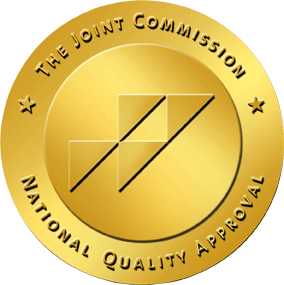Oxycodone, a generic opioid, clears from the blood in about 22 hours, but it can be detected for longer depending on the type of test.
Key Takeaways
- Oxycodone is a commonly prescribed opioid pain medication sold under brand names like OxyContin and Roxicodone.
- The drug is available alone and in combination with other agents like acetaminophen.
- Oxycodone can linger in your system for long after the pain-relieving effects of the drug wear off and can be found in hair samples up to 90 days after the last dose.
- Oxycodone withdrawal can last for around a week, although symptoms may persist for weeks to months in some cases.
Oxycodone is a generic opioid pain medication. Oxycodone is in brand-name medications such as OxyContin. It can be prescribed to relieve moderate-to-severe pain following an injury or major surgery. As with other opioids, oxycodone is habit-forming and has a high risk of dependence associated with its use, even by prescription. Other brand-name drugs with oxycodone include Oxaydo, Roxicodone and Xtampza ER.
Oxycodone is a prescription opioid. In contrast to “opiates,” it is a synthetic drug, not naturally occurring. Other prescription opioids include hydrocodone, fentanyl and methadone. All opioids are controlled substances. These types of drugs have accepted medical use but have the potential for abuse, addiction and dependence.
How long does oxycodone stay in your system? This is a common question for people facing drug tests or those wishing to avoid a potential overdose.
This Season, Give Yourself the Gift of a Fresh Start.
Whether you are struggling with addiction, mental health or both, our expert team is here to guide you every step of the way. Don’t wait— reach out today to take the first step toward taking control of your life.
The half-life of a drug is long it takes the body to eliminate half of the substance. Oxycodone’s half-life is approximately three to four hours. However, traces of oxycodone can be detected in your hair for up to 90 days after the last use. On average, oxycodone clears from the blood in around six hours. But many factors can impact this estimate. These factors include the person’s health and how large a dose they took.
Oxycodone Brand Names
Oxycodone has been on the market for several decades. Because of this, there have been many brand names in addition to generic oxycodone.
Common brand names include:
- Dazidox
- Endocodone
- Oxaydo
- Oxecta
- Oxycontin
- Oxyfast
- OxyIR
- Percolone
- Roxicodone
- Xtampza ER
These medications contain only oxycodone as the active ingredient. There have also been combination products that contain oxycodone plus other drugs. Examples include:
- Combunox (ibuprofen/oxycodone)
- Endocet (acetaminophen/oxycodone)
- Endodan (aspirin/oxycodone)
- Lynox (acetaminophen/oxycodone)
- Magnacet (acetaminophen/oxycodone)
- Narvox (acetaminophen/oxycodone)
- Oxycet (acetaminophen/oxycodone)
- Percocet (acetaminophen/oxycodone)
- Percodan (aspirin/oxycodone)
- Perloxx (acetaminophen/oxycodone)
- Primlev (acetaminophen/oxycodone)
- Roxicet (acetaminophen/oxycodone)
- Roxiprin (aspirin/oxycodone)
- Taxadone (acetaminophen/oxycodone)
- Tylox (acetaminophen/oxycodone)
- Xolox (acetaminophen/oxycodone)
How Long Does It Take for Oxycodone To Work?
Oxycodone is a powerful painkiller used for many different purposes. It is commonly used for chronic pain and pain after surgery. It is a common drug because of its effectiveness and how quickly it starts to work. For most immediate-release formulations, oxycodone starts working in about 10–30 minutes.
Oxycodone is also available in long-acting forms to treat chronic pain. These types of oxycodone start working in an hour. In contrast to short-acting versions, extended-release oxycodone does not have a peak effect.
How Long Does Oxycodone Last?
Oxycodone is a short-acting opioid that is removed from the body in less than 24 hours. The time of effect is even shorter. For short-acting opioids, oxycodone lasts about four to six hours for pain relief. The effects can be even shorter in people with a high tolerance for opioids.
Long-acting forms of oxycodone last much longer. Many of these formulations can last 8–12 hours before another dose is needed. These formulations are used for chronic pain, like what cancer patients experience.
What Is the Half-Life of Oxycodone?
The half-life of oxycodone refers to the time required for half the drug to leave the system. It usually takes five half-lives for a drug to clear from the body completely. Oxycodone’s half-life is several hours, no matter what dose of the drug you take. However, the specific half-life can vary depending on the oxycodone product you take:
- Short-acting oxycodone dosage forms: three to five hours
- Most long-acting oxycodone formulations: 4.5 hours
- Oxycodone myristate formulations: 5.6 hours
How Long Does Oxycodone Stay In Your System?
Oxycodone can stay in your system for different lengths, depending on what is being tested. A range of drug screenings may detect oxycodone, each with its own timeframe in which oxycodone may show up:
- In a urine test, oxycodone can show up from 1–3 days after previous use.
- A blood test is based on the plasma half-life of oxycodone. Like other drugs, it will clear in five half-lives or 3–6 hours.
- In a saliva test, oxycodone may be detectable for up to 36 hours after previous use.
- In a hair test, oxycodone can be detected for up to 90 days after the last use.
Factors That Influence How Long Oxycodone Stays in Your System
Oxycodone is a drug that is affected by many different factors. Some increase how long oxycodone sticks around; others make it metabolize faster. Some of these factors include:
- Age: Generally, older adults have a slower drug metabolism than younger adults. Oxycodone can accumulate in older adults and becomes a fall risk for some people. It can cause drowsiness and dizziness even at normally prescribed doses.
- Formulation: Oxycodone is available in short- and long-acting formulations. Taking a longer-acting form will cause oxycodone to stay in the body longer.
- Genetics: Some people will metabolize oxycodone more quickly than others because of their genetics. Oxycodone is mostly broken down by the liver enzymes CYP3A4 and CYP2D6. Some people have higher levels of these enzymes. Therefore, oxycodone leaves their body more quickly.
- Kidney health: If you have kidney problems, oxycodone will accumulate and take longer to leave the system.
- Liver health: Oxycodone is mostly broken down in the liver. If you have liver problems, oxycodone will take longer to leave the body.
- Weight: Most adults will metabolize oxycodone at the same rate, and weight does not play a major factor. However, the metabolism will be affected for those extremely overweight or underweight.
How Does Oxycodone Work?
Oxycodone works by activating opioid receptors. These receptors are located throughout the body. However, many are found in the brain and central nervous system (CNS). When oxycodone activates the receptors, it changes how pain signals are sent from the brain to the body. The activation can also slow down the CNS. Affected CNS functions include breathing, heart rate and blood pressure.
Oxycodone is a CNS depressant. Overdose can happen if someone takes too large of a dose or multiple doses too close together. An opioid overdose has symptoms such as limited breathing and changes in heart rate due to the depressant’s effects.
Sometimes, people using oxycodone may feel euphoria or pleasant feelings from the medication. This is because of its effects on the brain and its chemicals (neurotransmitters). These effects are one reason there’s a risk of developing an addiction while taking oxycodone.
Oxycodone Withdrawal Symptoms and Timeline
Oxycodone withdrawal can be very distressing and possibly dangerous. Since oxycodone is an opioid, symptoms are the same as other opioid withdrawals.
Common symptoms of oxycodone withdrawal include:
- Goosebumps
- Yawning
- Sweating
- Runny nose
- Tearing up (lacrimation)
- Dilated pupils
- Anxiety
- Agitation
- Muscle pain
- Trouble sleeping (insomnia)
- Abdominal pain and cramping
- Diarrhea
- Nausea and vomiting
Withdrawal symptoms can happen to a person who is dependent on the drug. Physical dependence occurs because oxycodone makes changes to the CNS over time.
Oxycodone activates opioid receptors more than would happen naturally. As a result, the body adjusts by lowering the number and activity of these receptors. When someone stops oxycodone, they don’t have enough opioid receptors for their body’s needs. This is how withdrawal symptoms start.
Withdrawal has a predictable timeline, and any withdrawal symptom can occur at any time during this period:
- One to four days: Symptoms start about 8–24 hours after last use, worsening over the first few days.
- Four to ten days: Symptoms may begin to improve halfway through the first week but may linger for a week and a half.
- 10+ days: Withdrawal is complete for most people, except maybe those who have abused large amounts of oxycodone or multiple substances. After acute withdrawal, some people can experience protracted withdrawal. This is when symptoms like anxiety, depression and sleep problems linger for weeks or months.
Opioid Use Self-Assessment
Use this self-assessment to evaluate your level of opioid use
Select all that apply to you
Get Help from a Recovery Advocate
Complete the form below to request a call and learn more about treatment options.
Oxycodone Addiction Treatment
For those located in Ohio and the Midwest, The Recovery Village Columbus Drug and Alcohol Rehab has many oxycodone addiction treatment options. Depending on your needs, we have the following levels of care:
- Medical detox
- Inpatient care
- Partial hospitalization program (PHP)
- Intensive outpatient program (IOP)
Our location near Columbus, Ohio, is staffed with licensed professionals using evidence-based care. We are fully accredited and are here to assist you in your journey. Following a medically supervised detox, treatment often involves cognitive behavioral therapy (CBT), dialectical behavioral therapy (DBT), individual and group counseling and other services in a serene and relaxing environment.
Oxycodone is one of the many prescription pain medications that are part of the opioid epidemic. If you or a loved one are struggling with oxycodone addiction, contact our Recovery Advocates today to speak to a representative who can help you toward a healthier future.
Frequently Asked Questions on Oxycodone
Oxycodone is a commonly prescribed medication, and people often have questions about the drug.
How long does oxycodone stay in your system if snorted?
Oxycodone has not been specifically studied in those who snort the drug. However, once snorted, the drug quickly enters your bloodstream. It is then broken down similarly to those who take oxycodone by mouth. Effects last between three and six hours.
How long do the effects of 10mg oxycodone last?
The effects of oxycodone last approximately three to six hours, regardless of the last dose. Long-acting forms of the drug may last longer. However, studies are limited on exactly how long they last.
What is the half-life of oxycodone liquid?
Oxycodone liquid is short-acting. It has the same half-life as other dosage forms of short-acting oxycodone — three to five hours.









